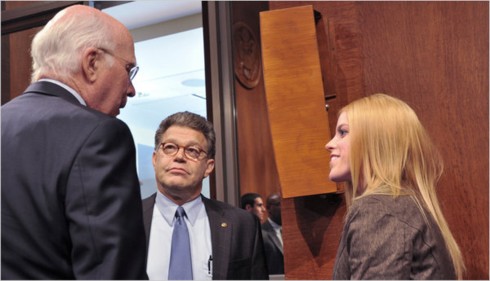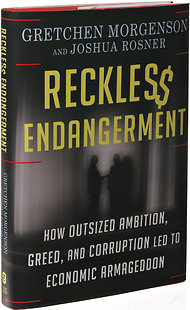So the story of Stella Liebeck opens the new documentary “Hot Coffee,†which will be shown Monday on HBO, part of its summer documentary series.
“Everybody knows — or thinks they know — the McDonald’s case,†said Susan Saladoff, who put her legal practice aside to direct and produce the film. “But they really don’t know it at all. I didn’t do this to become a filmmaker. I made this movie because I had something to say that needed to be said, and nobody else was saying it, at least to regular folks, to the public.â€
That message may be getting across. Ann Hornaday of The Washington Post, reviewing the film at the Sundance Festival, wrote that it provided “the kind of narrative that sends audiences out of the theater thinking in a brand-new way about something they thought they understood.â€
With a subject this fought-over it’s not surprising that the documentary itself has been controversial. A legal affairs blog that covers product liability law, Abnormal Use, criticized the film for having come from the hands of a trial lawyer, stating, “We’re thinking that this might not be the most objective documentary on the subject.â€
Of course that wasn’t really the filmmaker’s goal. Ms. Saladoff is, as a lawyer and now a director, an advocate. One of several strands in the film, Ms. Liebeck’s story shows how tort reformers deftly spun her case and others to nudge public opinion and argue for the need to shut down what industry advocates called “jackpot justice.†The film also lays out facts of the case that are rarely heard.
Many believe she was driving the car and juggling a cup of coffee — classic recklessness. In fact Ms. Liebeck’s nephew was at the wheel and was not going through the drive-through window. He had pulled into a space in the McDonald’s parking lot so that she could add cream and sugar to her coffee. She has been portrayed as a greedy plaintiff out for a bonanza, but she did not sue right away and initially asked McDonald’s only for the several thousand dollars to cover her medical expenses. The company refused.
And while jurors found that Mrs. Liebeck was 20 percent responsible for the accident, they were outraged by what they saw as the company’s arrogance and decided to punish McDonald’s by levying punitive damages amounting to two days’ worth of coffee sales. And those making jokes tend to skip the part of the story in which the judge reduced the award and the case was settled out of court.
“Susan has done a wonderful job of putting the real story out there,†said Judy Allen, Ms. Liebeck’s daughter. “We feel relief.â€
The film’s most powerful argument, however, might be the horrifying photographic evidence of Ms. Liebeck’s third-degree burns, presented indirectly at first through shocked reaction shots during man-on-the-street interviews. Then the audience gets to see.
“You hear this unanimous gasp through the whole theater,†said Ms. Allen, who teaches autistic children in Virginia.
Besides Ms. Liebeck’s case, the film looks at a number of other issues about civil lawsuits, including binding clauses in contracts for matters from cellphones to employment that sign away the right to go to court. That segment focuses on Jamie Leigh Jones, who said she was raped while working in Iraq for KBR, but whose civil lawsuit was initially blocked in court based on a clause in her employment contract.
The film also uses the story of Lisa and Mike Gourley, a Nebraska couple, to illustrate the effects of caps on damages. The Gourleys’ son Colin was born in 1993 with cerebral palsy attributed to medical malpractice. A jury awarded them $5.6 million to pay his lifelong medical needs.
But the State Legislature had capped overall damages for medical malpractice at $1.75 million. After legal bills and other expenses, the award did not amount to much, Mr. Gourley says in the film, and so “what happens then is, he goes on Medicaid, and the taxpayers have to pay.â€
Ms. Saladoff has structured an argument that America has narrowed access to the courts in many ways.
“It’s not like corporate interests took our rights from us,†she said. “We’re giving over our constitutional rights to the court system†by voting for tort reform measures and politicians and judges who favor them.
“We’ve been convinced through this massive public-relations campaign,†she added. “We’re doing it unwittingly.â€
Before taking the director’s chair Ms. Saladoff had a successful legal career and is a past president of the group Trial Lawyers for Public Justice, which is now called simply Public Justice. “You probably know the reason why†the name was shortened, she said. There was much to learn about filmmaking. “I didn’t know what an establishment shot is,†she said. “I didn’t know what B-roll was when I started.â€
So she surrounded herself with experienced filmmakers — like Cindy Lee, an editor whose credits include the Oscar-nominated Iraq-war documentary “No End in Sightâ€; Martina Radwan as director of photography (the Oscar-nominated “Ferry Talesâ€); and Carly Hugo, a producer whose films have appeared at Sundance. Still, Ms. Saladoff found her courtroom experience useful.
“I know how to tell stories,†she said. “Doing it on the screen, telling it in a documentary, is not so different from trying a case in front of a jury.â€
She found that questioning a witness on the stand was akin to interviewing people on camera, and that organizing documents to tell a story was a common skill in courtroom and newsroom alike.
One group of reviewers has given the film a thumbs down: those who work to limit what they call frivolous lawsuits. Bryan Quigley, a spokesman for the United States Chamber Institute of Legal Reform, compared the film to the Flat Earth Society.
“In the midst of all the evidence they cling to the belief that America doesn’t have too many lawsuits, but that we don’t sue enough,†he said. “They deny that America’s lawsuit industry is out of control, when the rest of the world knows that it is.â€
A longtime leader of the tort reform movement, Victor E. Schwartz, appears in the film and pronounced himself unhappy with the result. “I’ve seen lots of plaintiffs’ lawyers’ propaganda — nothing like this,†he said. “It’s very well produced, but it may lead people to believe something that’s not true.â€
He counters the film’s arguments nimbly, pointing out that overall economic caps like those that affected the Gourleys are relatively rare, compared with restrictions on punitive damages and compensation for pain and suffering. As for the coffee case, he said, other juries have not awarded damages in similar cases, and while Ms. Liebeck’s defenders cite hundreds of hot-coffee complaints to McDonalds, he noted that billions of cups were sold over the same span.
He also complained that his comments in the film were selectively edited to make him look more supportive of the film’s argument. Ms. Saladoff used part of a quotation, for example, in which Mr. Schwartz acknowledged that money flooding into judicial elections may not be a good thing; but he said she should have also used his argument that the business lobby increased contributions in response to earlier contributions from plaintiffs’ lawyers. “Both points I make are valid,†he said, but “the money really began with the plaintiffs’ lawyers, big time.â€
Asked to respond, Ms. Saladoff said, “The quote was complete and in context.â€
But Louie Psihoyos, the director of the Academy Award-winning 2009 documentary “The Cove,†about dolphin hunting, said presenting both sides equally isn’t necessarily the goal.
“After you’ve gathered as many sides of the story as you can, having a strong point of view is essential for a good documentary,†he said, even helping to bring about social change. “A good documentary can become a weapon of mass construction.â€
http://www.nytimes.com/2011/06/26/arts/television/hbo-to-show-hot-coffee-susan-saladoffs-first-film.html?pagewanted=1&_r=1&adxnnlx=1309316648-JuVAlcLrigPKN0vs3TJ5Kg





